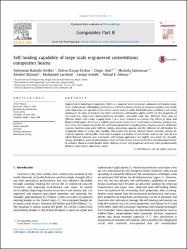Self-healing capability of large-scale engineered cementitious composites beams

Göster/
Tarih
2016Yazar
Keskin, Süleyman BahadırKeskin, Özlem Kasap
Anıl, Özgür
Sahmaran, Mustafa
Alyousif, Ahmed
Lachemi, Mohamed
Ashour, Ashraf F.
Üst veri
Tüm öğe kaydını gösterÖzet
Engineered Cementitious Composites (ECC) is a material which possesses advanced self-healing properties. Although the self-healing performance of ECC has been revealed in numerous studies, only smallscale, laboratory-size specimens have been used to assess it under fixed laboratory conditions and curing techniques. In order to evaluate the effect of intrinsic self-healing ability of ECC on the properties of structural-size, large-scale reinforced-beam members, specimens with four different shear span to effective depth (a/d) ratios, ranging from 1 to 4, were prepared to evaluate the effects of shear and flexural deformation. To ensure a realistic assessment, beams were cured using wet burlap, similar to on site curing. Each beam was tested for mechanical properties including load-carrying capacity, deflection capacity, ductility ratio, yield stiffness, energy absorption capacity, and the influence of self-healing, by comparing types of failure and cracking. Self-healed test beams showed higher strength, energy absorption capacity and ductility ratio than damaged test beams. In test beams with an a/d ratio of 4 in which flexural behavior was prominent, self-healing application was highly successful; the strength, energy absorption capacity and ductility ratios of these beams achieved the level of undamaged beams. In addition, flexural cracks healed better, helping recover the properties of beams with predominantly flexural cracks rather than shear cracks. (C) 2016 Elsevier Ltd. All rights reserved.

















